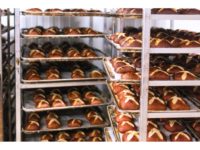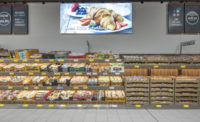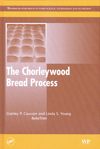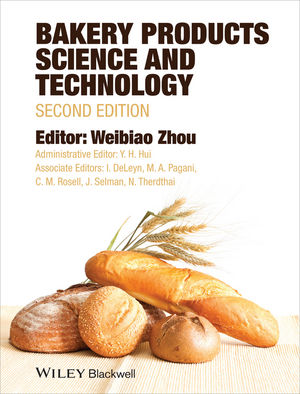Shaping artisan bread in a post-pandemic age
Consumers crave fresh-baked artisan bread, partially due to in-home pandemic baking.

The Bottom Line:
- Redefining “artisan”
- Bread sales are up
- New flavor combinations
“Artisan” is one of those slippery descriptors that’s often best defined by way of example—that is, even if you can’t articulate what it is precisely, you sure know it when you see it.
Or, in the case of artisan bread, when you smell it, taste it, or crunch into its craggy, caramel-colored crust.
And as it turns out, consumers—emboldened by their forays into home baking during COVID’s cocooning stage—have not only redefined their notions of what artisan bread should be, but are rediscovering their abiding appreciation for it, too.
That appreciation abides even as sandwich shops, supermarket bakeries, and trusty center-store bread aisles reopen, and it promises to grow stronger as these newly minted amateur artisans inspire bakery brands to innovate.
As Jake Huber, director of US sales, St Pierre Bakery, Manchester, UK, puts it, “COVID challenged bakery with changes in shopping habits so dramatic that the sector has been transformed. Now that the pandemic has shown consumers how easily a meal can be elevated via baked goods, new opportunities are arising for brands that [are] up to the challenge.”
Fresh longing
There’s no denying that COVID led to a phase shift in how consumers think about food—including bread.
“Both the desire to eat something comforting and the surge in home baking revived a real longing for fresh-baked bread in general and artisan bread in particular,” observes Brie Buenning, director of marketing, La Brea Bakery, Los Angeles.
In fact, when La Brea surveyed self-identified “bread lovers” on their shopping habits, it learned that 35% are buying more fresh-baked bread now than they were pre-pandemic. That’s a data point that Buenning believes “demonstrates the category’s strength and positively impacts the artisan-bread category immensely.”
What’s in a name?
Why? Because for many bread consumers, “fresh-baked” is “artisan.”
So, too, are premium ingredients, depth of flavor, “a satisfyingly crispy crust, a soft interior, and the versatility to enhance any dish,” Buenning adds.

Ray Million, vice president of operations, Hudson Bread, North Bergen, NJ, includes on his artisan checklist the use of natural leavening and production methods that might take a little longer, but that reap artisan-tasting results in return.
For example, he explains, “Artisan requires bulk fermentation, soft-handling makeup equipment, and an extra step—an interruption in proof known as a cold proof—that gives the dough time to mature and develop naturally before oven entry.” Beyond that, he continues, “Small batches and automation are also key to processing efficiently and consistently. And packaging has to excite the senses while helping extend the product’s shelf life.”
Updating artisan
What Million describes is a blend of tradition and technology that increasingly characterizes the art of artisan baking. And as awareness of the category grows, he says, “That’s opening up innovations in production methods and ingredients that capture even more consumers’ imaginations.”
Among those innovations are “new and exciting flavor combinations,” says Anu Fisher, marketing manager, Lantmännen Unibake USA, Inc., Lisle, IL. She also believes that “real” ingredients like fresh fruit, butter and eggs, not to mention “Instagrammable” additions—think beet root, matcha, and avocado, for instance—reflect two key trends driving artisan baking today: the desire for health and indulgence, all in one baked good.
Buenning agrees. “Consumers seek options that are accessible, delicious and made with clean ingredients,” she says. “And healthy-eating trends have made them more open to experimentation.”

In a bid to capitalize on their openness, she notes, La Brea launched a “revamped portfolio” of take-and-bake breads in varieties like seeded sourdough rolls, sunflower-turmeric rolls, rosemary-garlic focaccia rolls, and ancient-grain baguettes that “innovate to meet consumers’ dietary needs while delivering on both the comfort and quality of artisan bread.”
And that quality factor is crucial, Huber emphasizes. “Artisan can mean different things to different people,” he says, “but I think what unites all the definitions is ‘quality.’ Shoppers choose artisan because there’s an association with quality, and if you offer a quality product consistently, shoppers will keep coming back to your brand.”

Instore experience
And they’ll keep coming back to the instore bakery to find it.
In fact, says Huber, “We’ve long held the instore bakery to be where retailers provide a shopper experience that the commercial bread aisle just can’t deliver in the same way. So now that foot traffic has returned, it’s imperative that retailers deliver on this expectation—both in the shopping experience and in the available product range.”
St. Pierre is helping them do so with its upgraded bake-at-home options. As Huber notes, “The ‘take-and-bake’ sector in particular has experienced a ‘race to the bottom’ and is highly commoditized. That makes now a great time to highlight quality product.” He believes that St. Pierre’s line of “authentic” take-and-bake French baguettes and crusty rolls will do just that, introducing existing consumers to a new category and “improving an area of bakery which is, quite frankly, a bit stale.”
La Brea is also improving take-and-bake, but with an eye toward the instore bakery’s needs. “According to Technomic,” Buenning explains, “38% of consumers were purchasing something from an instore bakery every shopping trip or nearly every trip prior to the pandemic; now that rate is 32%. So to address this, we’re partnering with instore-bakery operators to offer new varieties of our take-and-bake and fresh artisan breads, and we’re helping them with labor issues through innovative packaging and marketing support to boost sales.”
As for Hudson’s instore efforts, Million notes that the company’s frozen artisan breads have been heroes in the instore-bakery space, giving operators “the ease of freezer-to-oven in 15 minutes, depending on the bread being baked, and allowing for a constant supply during peak selling hours and reduces empty shelves and sales losses. Besides, who doesn’t enjoy fresh-baked bread?”
Hudson freezes its product in a two-stage process developed with baking-equipment manufacturer Miwe, Million explains. “The first stage takes the bread from the oven to a spiral cooler maintained at 42°F, preparing the baked breads to enter the spiral freezer where the final internal temperature will drop to -10°F,” he says. After that, the product bakes until it’s about 10% shy of full completion to maintain optimum moisture levels and allow for better instore handling, shorter bake times, and a longer shelf life, he says.
Million considers the innovation mildly revolutionary both for Hudson and for the artisan-bread category. “We live in the worlds of both fresh and frozen,” he concedes, “but we realize that fresh-baked can keep you in touch with your product and its integrity even while moving towards frozen.”
Artisan on menus
Million notes that a number of foodservice operations have expressed interest in the frozen artisan breads. “And the exciting part is that we have chefs creating wonderful sandwich and appetizer applications using them,” he adds. “So it’s a win-win-win for everyone—for us, for foodservice, and for the guests.”
And foodservice could use the win. “We all know how the foodservice industry was impacted by the pandemic,” Buenning says. “So now that people are eating out again, operators are looking for products that help address labor constraints, supply-chain issues, and other obstacles while also bringing back traffic.”
La Brea’s “revamped” sandwich carriers address these changing needs with improvements like an extended four-day ambient shelf life, courtesy of natural enzyme technology; a practical thaw-and-sell format that trims time and labor costs; and recipe suggestions to make the most of the product’s assets, Buenning claims.
And Fisher notes that dinner rolls are “making a comeback” in foodservice, “offering versatility as sandwich carriers, when paired with dips and sauces as appetizers or when served with updated oils and butters as table bread.”
Lantmännen debuted its Euro-Bake Top-Sliced Diamond Ciabatta in 2021 to take advantage of this renaissance. “The slices at the top of the roll allow for versatility and a modern dining experience,” Fisher notes, which suits the product to use in “endless applications, including as table bread, an appetizer or even in entrées,” she says. “And the versatility lets operators move away from complimentary table bread toward menu-item additions.”
Headwinds or full-steam ahead?
So if those are some of the upsides buoying artisan baking, where might there be headwinds?
“With inflation, labor costs, and supply issues continuing through 2022 and into 2023,” Fisher says, "the premium pricing associated with artisan breads may be a hurdle. The challenge will be to find the balance between providing premium products and selling them at a price consumers are comfortable with.”
But hurdles can be opportunities in disguise. As Huber points out, “When consumers ‘feel the pinch’ they don’t necessarily spend less money, but they often become more discerning in where and how they spend it. This should be a key consideration for artisan players. Savvy brands and retailers will be ready to highlight their quality to shoppers.”
After all, he continues, “The trend toward premiumization is here to stay. Shoppers were elevating their meals at home because they couldn’t travel or dine out during the pandemic, but now that the cost of living is on the rise, consumers are still looking to treat themselves at home.”
Even better, Million observes, “Consumers enjoy good bread. That’ll always be the case.” More quality options at retail and food service will only expand good bread’s market, he believes, as well as its appeal. “People will always eat,” he says, “and bread is a staple food source.” SF&WB
Looking for a reprint of this article?
From high-res PDFs to custom plaques, order your copy today!








